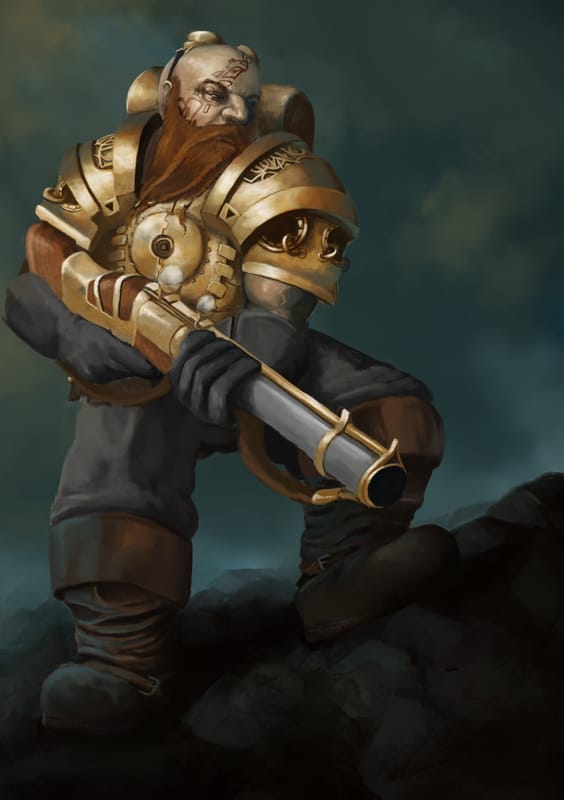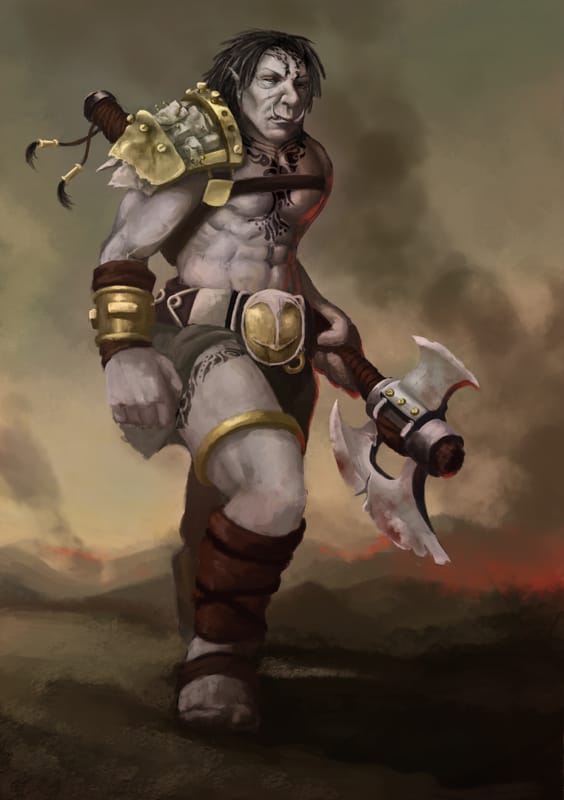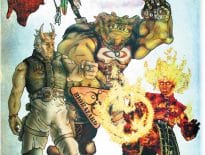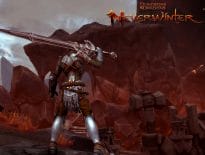Carl Harrison is the Lead Deigner for Caelestis Designs and Ryan Schoon is the Lead Writer. The team has a Kickstarter pitch for a steampunk RPG that proposes a “Renaissance” view to steampunk and a close look at the use of dice and luck in RPGs. Geek Native was able to ask Ryan and Carl some direct questions about Edara and how they saw it working.
At the start of this year IBM calculated that Steampunk would grow into a mainstream trend. Why do you think the genre has become so popular?
Ryan: Well to be honest, Steampunk has always been popular, it has just been bubbling under the surface. It has been a huge sub-genre of science fiction every since 20,000 Leagues Under the Sea. I think its finally coming to the media attention due to the growing amount of Steampunk fiction (tv shows, books, anime, even video games) that focus on the Steampunk Aesthetic. We are seeing a growing number of Steampunk Conventions, which we didn’t always have and I think retailers are finally starting to see that Steampunk sells. So this is a really great time for Steampunk fans.
Some of Geek Native’s readers would say that Steampunk isn’t simply a matter of gluing gears and clockwork to things. What do you think are the defining characteristics of the genre?
Ryan: It is a common idiom that to make something Steampunk, just “stick a gear to it.” There is SOME truth to that. In fact, Steampunk is more about gear and mechanical devices powered by steam than it is about the steam itself. Copper pipes and complex gears will always be a trademark of Steampunk. But that’s just what it looks like, that’s not the characteristics behind it. We combined Steampunk ideals with that of the Renaissance because they work perfect together.
One of the main facets of Steampunk is this idea that anyone can be anything. Using this technology, a young boy can become a hot shot pilot. A genius inventor can become a superhero. It is a very hopeful genre. Just like with the birth of any new technology, Steampunk is going to allow people to live lives they had never thought possible. So I feel that we really captured this spirit of steampunk and you see both sides of it.
You see this Renaissance, much like that of Italy’s, where the new technology is spurning new and novel inventions every day. And you also have the dark side of the Steampunk world. Industrial cities where workers are struggling to survive in harsh, low class conditions.
Carl: We wanted to make sure that Steampunk is not just an aesthetic in our world. The history and lore of Edara developed naturally over several years, so the birth of an industrial revolution was a normal part of the history’s progression. It is weaved into the lore of the game, so players will really be able to feel it. But we also wanted them to be able to live it. The Steampunk elements are in character creation, gear, and the story, too. People won’t have to worry if we just “glued on a gear,” there is a lot more to it.
How will Edara’s take on “Steampunk Renaissance” differ from the more commonly found Industrial Age Steampunk?
Ryan: The “industrial” steampunk will still be there, but that is just one small facet of Steampunk overall. It is, however, mostly what comes to mind when someone thinks steampunk. A very dystopian version of the Victorian era where the rich get richer, the poor get poorer, smog fills the skies and men in giant mechanical armor fight in the streets. Those things do happen in Edara, mostly in some of the Human cities devoted to Industry. But we also have the Elven realms, where you see a more lighter, healthier version of Steampunk. And the Dwarven kingdoms, where they manage to coexist and adapt this new technology. But setting it in several different locations spanning half a continent, you can see the whole gamut that Steampunk has to offer. And by setting it in a Renaissance style time period, we capture more of the “future of tomorrow today” feeling. There is an air of lightheartedness in this world, though below that something deep and dark does fester.
Carl: Not only have different races and cultures adopted the technology differently, but it is all brand new. The world had entered a renaissance period first, and their industrial revolution is really just getting on its feet. So you will see elements of both the renaissance and the industrial revolution, rising from this high-fantasy medieval environment. It is a very diverse and rich environment, players will be able to use the traditional fantasy, scientific and artistic renaissance, or industrial steampunk to whatever extent they want. We provide all three, they get to pick how much of it they include in their games.
Edara uses a d12 system that puts creative solutions and strategies ahead of lucky die rolls. Does luck play a part in the system? Can young and brave but inexperienced heroes fluke their way through a tough encounter?
Ryan: Luck does play a part in this system, though its not as large as in some other games. And no, I wouldn’t say that young and inexperienced heroes can fluke their way through a tough encounter. I think that players CAN take on encounters much tougher than themselves in our system, but they have to achieve it through teamwork and creative skill use. However, there is no steep learning curve to our game. Once a player understands the basic mechanics they should be able to handle anything a GM can throw at them, even during their first game. However it is also the GM’s job to judge new players and not put them through more than they can handle.
Carl: You have to remember that we are still using dice. Luck is not as prevalent, but whenever you are using dice it will have a role. Pun intended.
You describe Edara as a “Serialized Role-Playing Game” that’ll make use of social media. What does serialized mean in this context? Can you share an example of how social media might be used?
Ryan: Serialized in this context means that we will be telling a story within the game. The world is evolving and changing so fast, and so much is going on that it would be impossible to tell the story just by releasing Core Rulebooks every few years.
So, like the old serialized novels where they would release chapters every few months, we are going to do the same thing.
We are going to tell the evolving story of Edara through Adventures that the GM will guide players through, much like the modules that you will find in other games. Ours are different because we aren’t just an RPG system, like D&D or Pathfinder. We are a whole fantasy world. And so we can use that to tell an official story that slowly pulls the curtain back on whats really going on behind this seemingly wonderful world. And social media is a great way to keep players connected.
Those who play at store events can have their character data updated and posted online, so they can share build tips and strategies. People can chat back and forth in our forums in their attempts to figure out the next twist or turn waiting in the future adventures. It will bringing all the players together.
Do you think social media and the ease at which anyone can publish, comment or share has had an impact the RPG industry? Has it been for better or worse?
Ryan: Absolutely, and I think it is for the better. In our trek to publish Edara, I have encountered so many other independent developers who have released content for other systems or created their own board games that would never have been published without sites like Kickstarter. We have a great game here, for example. Everyone that has played it has loved it. But in the old days, that wasn’t enough to get published. You had to make sure the RIGHT guy was playing it at the RIGHT time and get a lucky break in order for word to spread about your game, and then hope you can fit into a publishers busy publication schedule. But now, we can bring this world to players we never could meet in person, people as far away as Germany and Australia, and we can publish our game on our own terms and deliver something thats going to really satisfy our fans.
Lastly, what do you think the RPGs of 2020 will be like? Will we see more serialised social games like Edara or do you think the “old school renaissance” of much simpler, commitment light, play in an evening trend will have taken us in an entirely different direction?
Ryan: That’s a great question, and one that is very hard to answer.
We hope to offer something unique with this game, and its something that isn’t really out there right now. And I’d like to hope that in eight years people are still gathering together around the tabletop to roll a die and use their imagination. But at the rate technology is growing, it would be more likely that people gather around a computer and toss virtual dice with friends they only see once a year at GenCon. And if we really are 10 years away from virtual reality, then that will change roleplaying significantly.
There is always room for light, “play-in-an-evening” types of games. But if the trend in television or movies is telling us anything, its that people want to keep coming back to the same worlds over and over, and consuming more and more content produced in that world. Which is great for a game like Edara.
Hit us up with some intelligent observations in the comment box below.




